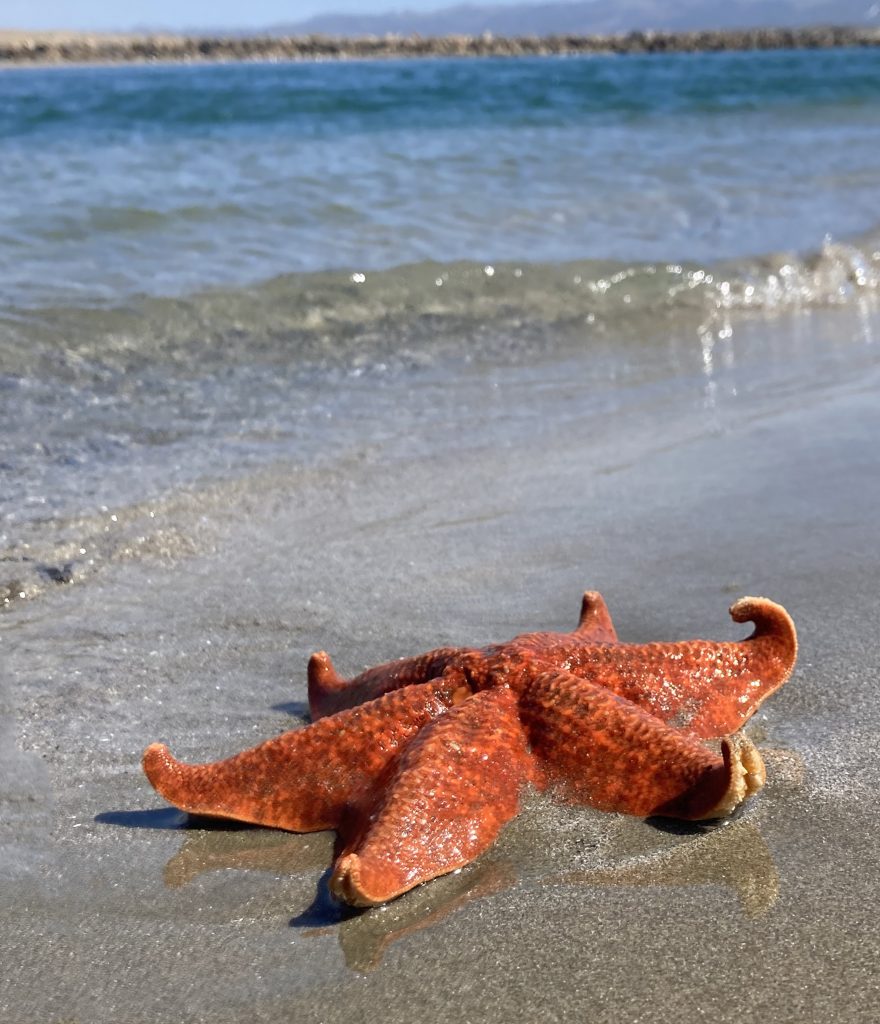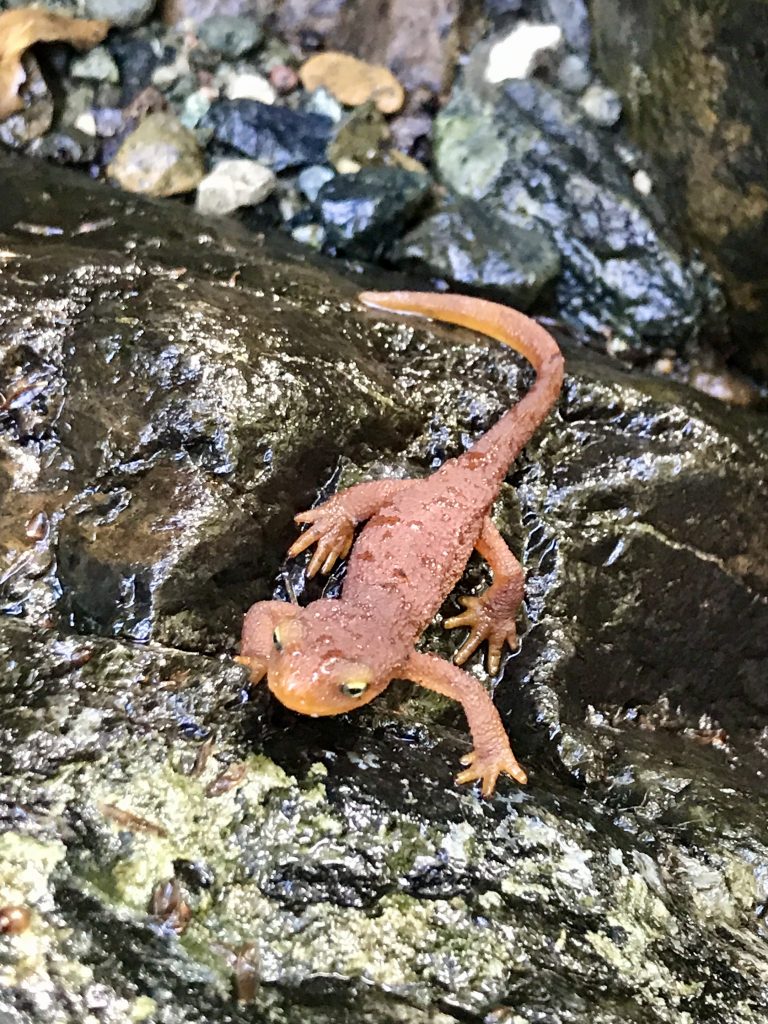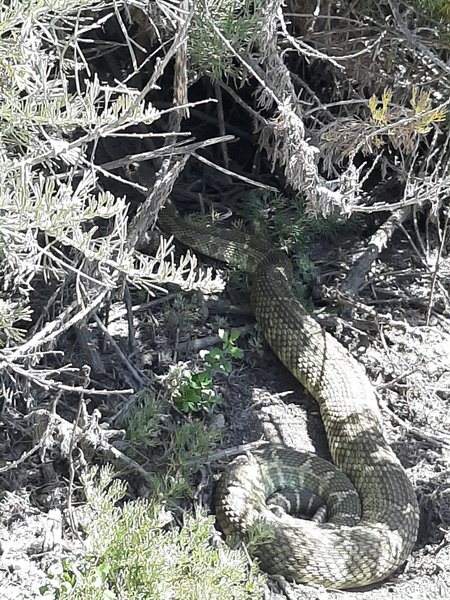Morro Bay estuary and watershed provide habitat for a wide range of species
You never know what amazing wildlife you’ll see in, on, or around the Morro Bay estuary. This area is a biological diversity hot spot, meaning that we have a wide range of species that are native to this area, including some species that are found nowhere else in the world, like the Morro kangaroo rat and the Morro manzanita.
Morro Bay Estuary and Watershed Biodiversity Project on iNaturalist
To get an idea of the range of species that live in the Morro Bay estuary and surrounding lands, check out our Morro Bay Estuary and Watershed Biodiversity Project on iNaturalist. This app includes crowdsourced photographs and species sightings from all around the watershed. If you’re interested, you can even contribute your own photographs and sightings! You don’t need to know what the animal or plant you’ve spotted is, just give your best guess and others on the platform will help identify it for you.

Atlas of Sensitive Species of the Morro Bay Area
If you’re curious about which species in our area are threatened, endangered, or otherwise sensitive to habitat change, loss, or other threats, the Atlas of Sensitive Species of the Morro Bay Area might interest you. This publication gives details about dozens of species from lichens, to lizards, to sea lions that require special protections to survive and thrive around the Morro Bay estuary.
Photographs of local wildlife from the field
Today, we’re sharing a few photographs of wildlife that our staff have captured around the watershed this spring. Enjoy!
Bat star (Patiria miniata) in the bay
Most bat stars have five legs, but this one has six. Its bright red-orange color stands out against the blue of the water at the harbor mouth and the brown of the wet sand at the water’s edge. The surf rushes in and out, covering and uncovering it. A staff member spotted it at Widdle Walls beach, on the south side of Morro Rock. (For some interesting local lore and an explanation of this beach’s name, scroll to the bottom of this page on the Morro Bay Little Guard’s website.)

Though you might think of sea stars as stiff and unmoving, they actually have internal skeletons that allow them to flex and move their arms quite easily. You can see the sea star’s legs curling up at the tips in the photograph above. If you look really closely, you can even see the tube feet covering the bottom of those legs. The sea star has hundreds of these structures, each of which looks a little like a very short spaghetti noodle, spread across its underside. The sea star pumps water in and out of its tube feet causing them to expand and contract, which moves the whole sea star’s body where it wants to go.
When you see one of these beauties, whether it’s on the sand, a rock, or a pier piling, make sure to leave it where you found it. This allows the sea star to stay wild and safe.
California newt (Taricha torosa) in a creek
A staff member spotted this California newt while monitoring water quality in one of the creeks that leads to the Morro Bay estuary. These small amphibians are endemic to California, and are typically found in or very near to the water. They migrate back to their natal streams in late winter or spring to reproduce.

California newts have evolved an interesting way of protecting themselves from predators. When they feel threatened, they excrete a neurotoxin called tetrodotoxin. This is the same chemical produced by pufferfish and a few other marine organisms, and it can be deadly when ingested. Because of this natural defense, they have few natural predators. According to Los Padres Forestwatch, a species of garter snake has developed resistance to the neurotoxin and can eat the newt without succumbing to its poison.
Can California newts hurt people or pets?
The neurotoxin that the newts excrete can harm humans only if we ingest them or if the toxin gets into a cut or scrape on our skin and enters our bloodstream directly. While we are sure that you have no plans to dine on California newt, your dog might have other ideas. This is one reason that it’s important to follow good trail etiquette when hiking with your furry friends.
Tips for hiking safely with dogs
- Bring dogs only on trails where they’re allowed
- Keep dogs on their leashes. (This will help you to keep a good eye on anything they try to chase or chew on!)
- Pick up any pet waste and bring it to a trash can. This helps keep dangerous bacteria out of the water, which keeps both wildlife and people healthy.
These tips will help you, your loved ones, and any California newts or other wildlife you meet to stay safe and healthy.
Northern Pacific rattlesnake (Crotalus oreganus) on the bluffs
When the weather warms and the sun is out, your chances of seeing a northern Pacific rattlesnake increase. As cold-blooded animals, they rely on the sun’s heat to keep them warm. Northern Pacific rattlesnakes can grow as long as five feet, but typical adults are between fifteen and thirty-six inches.
Though the thought of seeing one of these serpentine beauties on your next hike might make you shiver, yelp, or even sweat, rattlesnakes are an extremely important part of the ecosystem. By consuming ground squirrels (which are immune to their venom!), rabbits, mice, rats, birds, lizards, and other snakes, rattlesnakes keep these populations down and the balance between them in check.

It’s also important to note that rattlesnakes do not go out of their way to bite people. They would rather conserve their venom for subduing prey to keep themselves fed, so they bite only when they feel they have to defend themselves. To avoid putting both the rattlesnake and yourself in that dangerous position, you can follow some simple steps.
Steps for staying safe in areas where rattlesnakes may live
- Stay on the trail to avoid accidentally stepping on or brushing against a rattlesnake. This is when most bites occur.
- Wear closed-toed shoes to protect your feet in case you do come in contact with a snake.
- Teach children to respect snakes and leave them alone.
- Keep your dog leashed and close to you whenever you are walking in snake country.
The steps above are recommended by the California Department of Fish and Wildlife, which has a more complete list of precautions here.
Rattlesnakes, just like newts, bat stars, and all of the other wildlife in and around the Morro Bay estuary make this place special.
Help protect and restore the Morro Bay estuary
- Donate to the Estuary Program and support our work in the field, the lab, and beyond.
The Estuary Program is a 501(c)3 nonprofit. We depend on funding from grants and generous donors to continue our work. - Support us by purchasing estuary-themed gear from ESTERO. This locally owned and operated company donates 20% of proceeds from its Estuary clothing line and 100% of Estuary decal proceeds to the Estuary Program. Thank you, ESTERO! You can find ESTERO hoodies, shirts, hats, decals, and more online at esterosurf.com or at Joe’s Surfboard Shop in Morro Bay.
- Purchase items from the the Estuary Program’s store on Zazzle. Zazzle prints and ships your items, and the Estuary Program receives 10% of the proceeds. Choose from mugs, hats, t-shirts, and even fanny packs (they’re back!) with our fun Estuary Octopus design or our Mutts for the Bay logo.